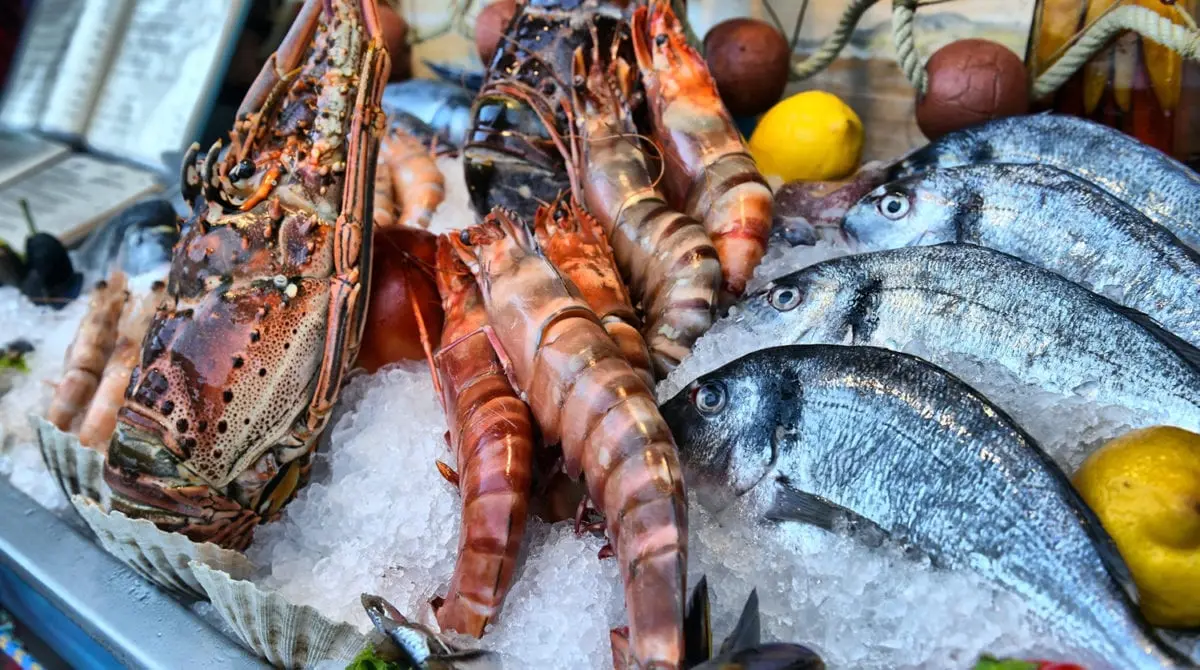List of Seafood
Seafood Articles
About the Seafood

Seafood is all edible seafood. Seafood is rich in vitamins and unique trace elements that have a beneficial effect on the human body.
Seafood relieves bad mood and depression. People who often eat seafood are less likely to experience office stress. Therefore, city dwellers should include seafood in their daily diet as often as possible.
The benefits of seafood
The usefulness of seafood depends on its biochemical composition. For example, shrimp contains a variety of iron, calcium, sulfur, magnesium, and phosphorus. Octopuses are fortified with B and C vitamins.
Seafood is unique in that it contains a large amount of polyunsaturated fatty acids Omega-3 and Omega-6. These substances have a particularly beneficial effect on the cardiovascular system, protect the vessels from thinning and the formation of plaques.
Seafood normalizes blood cholesterol levels, regulates metabolic processes in the body, and affects the gastrointestinal tract. The protein found in any seafood is easy to digest and perfectly saturates the body with energy. Iodine and iron support the thyroid and brain function.
In general, seafood is low in calories and is often used for dietary nutrition. The average calorie content is 90 kcal per 100 grams.
Harm to seafood
Seafood can be contaminated. For example, worms or parasites (herring worm). Viral infections cause poisoning, gastrointestinal disorders. Still, contaminated seafood can cause dehydration, fever, hepatitis, Norfolk infection, and Botkin’s disease. Therefore, you need to be wary of unverified seafood suppliers.
Another danger: seafood can contain toxins and poisons that get into living organisms with seawater. Most of the harmful substances accumulate in mollusks, which are already fed by the larger representatives of sea waters.
Toxic seafood causes stomach pains, nausea, and headaches. Convulsions, disorientation in space, and even short-term memory loss may appear.
How to choose the right seafood
Most often, seafood is sold frozen. When choosing, focus on the production date, shelf life, and appearance of the seafood. There should be no unpleasant odor from the products.
If there is frost inside the frozen package, then the seafood fell under the temperature difference with re-freezing.
High-quality shrimps have an even and smooth color, a curled tail. If the tail is unfolded, the shrimp died before freezing. Mussels should have intact shells and pronounced jags. Good oysters are light beige in color, with orange or pink splashes.
Another guideline when buying seafood is their price. Gourmet products are usually exported from the Mediterranean coast, the Far East, Southeast Asia, so they simply cannot be cheap. If you are offered to buy cheap products, then most likely something is wrong with the product.
It is important to eat seafood from ecologically clean areas. Because fish, mollusks, crustaceans accumulate salts of heavy metals and mercury well. Therefore, it is better to eat fish of short-living varieties. For a year or two, they do not have time to accumulate the concentration of mercury, which will be toxic to humans.
Recent studies have shown that in shark fins, mercury levels are off the charts. The benefits of seafood are enormous. First of all, it is omega-3, which is well absorbed. More phosphorus, sulfur, selenium. Seafood improves the elasticity of blood vessels, has a beneficial effect on the cardiovascular and nervous systems.
The Mediterranean diet that uses seafood is recognized as a WHO achievement. Seafood contains iodine, which can help reduce thyroid disease. When iodine enters the body along with other trace elements, it is absorbed much better.










je hukila Kila wakati Ina weza kudhuru
Пн